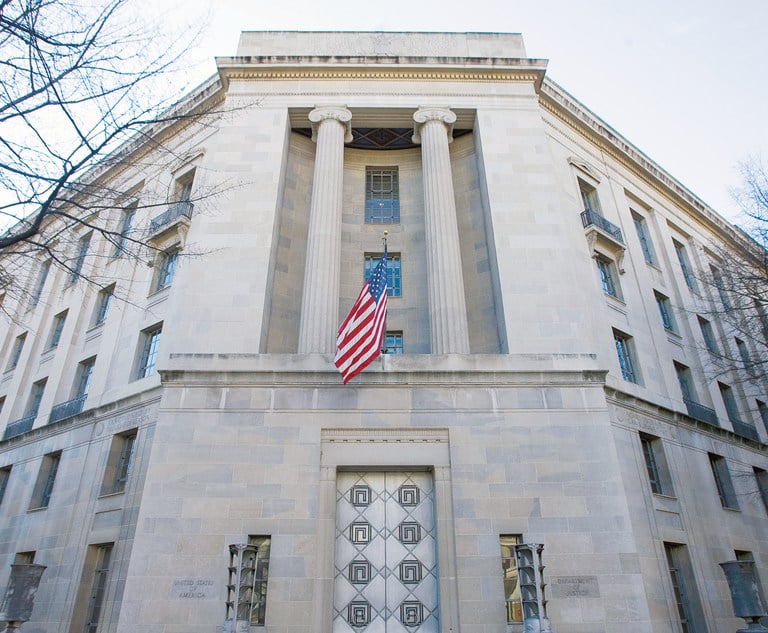E-discovery: Set realistic preservation boundaries early on
No one wants to be accused of destroying evidence.
May 30, 2012 at 06:30 AM
6 minute read
The original version of this story was published on Law.com
This is the second in a series of articles that will cover the different phases of e-discovery.
“A really good conspiracy theory can never be disproved.” ~ Anonymous
No one wants to be accused of destroying evidence. A party faced with this charge is in a very bad spot because spoliation charges create a sense of wrong-doing, regardless if the allegation is true or not. This opens the door to all kinds of negative inferences to be brought against the spoliator that, much like a really good conspiracy theory, can never be disproved.
The “hold memo” is a regular fixture of civil litigation, but even so, concerns arise where pertinent material is lost, despite the best efforts of all involved. When that is the case, anyone with a professional license to protect prays the destruction is innocent and the damage is minor, lest a routine civil matter take a detour into an investigation of alleged bad faith conduct.
Computers have multiplied the ways in which information can be stored and, consequently, lost. By definition, electronically stored information (ESI) requires translation in order to be a useable form of evidence. Deep analysis of a hard disk drive recording will produce information that is meaningless to the standard five senses. Because the machine is between the user and the actual information, and is required to manage the media and the data, the machine may have behaviors that are not immediately apparent to the users of electronic systems. This results in the loss of information.
As time passes, file space is written over by the computer, old emails may be deleted by algorithms or policies designed to keep mailboxes from becoming too large, or the mechanical media may simply fail. Just turning most devices off, or removing power for long enough, will cause the loss of at least some information. Otherwise, for instance, you would never need to reset an electronic clock to the correct time.
Many attorneys at least understand these issues on a basic level and some demand that all ESI be preserved for fear that it might disappear into electrical oblivion. But for even a small enterprise, all ESI can be a huge amount of information. A general request to preserve all ESI does not make any more sense than a request to preserve all paper, yet the demand stirs up considerable angst.
Fortunately, the concept of proportionality is as applicable to ESI preservation as it is to ESI production demands. The 7th Circuit e-discovery principles contain an extensive discussion of preservation issues:
“Appropriate preservation requests and preservation orders further the goals of these Principles. Vague and overly broad preservation requests do not further the goals of these Principles and are therefore disfavored. Vague and overly broad preservation orders should not be sought or entered. The information sought to be preserved through the use of a preservation letter request or order should be reasonable in scope and mindful of the factors set forth in Rule 26(b)(2)(C).”
This principle reflects the proportionality standard that requires limiting discovery where the burden or expense outweighs its likely benefit contained in Rule 26(b).
As with ESI identification, companies should favor a cooperative and early approach to preservation issues. By openly negotiating what needs to be preserved, the party that holds the ESI can define the scope of what it must do and retire considerable risk early in the case. This is the approach favored by the Federal Rules and the 7th Circuit principles.
The Rules say, “A discovery plan must state the parties' views and proposals on…any issues about disclosure or discovery of electronically stored information.” The 7th Circuit principles also address this issue:
“Every party to litigation and its counsel are responsible for taking reasonable and proportionate steps to preserve relevant and discoverable ESI within its possession, custody or control. Determining which steps are reasonable and proportionate in particular litigation is a fact specific inquiry that will vary from case to case. The parties and counsel should address preservation issues at the outset of a case, and should continue to address them as the case progresses and their understanding of the issues and the facts improves.”
Given the mandate to address preservation issues up front, it makes sense to put forward concrete proposals for preserving evidence that may be of particular concern. At the same time, however, it also makes sense to clarify everyone's obligations by stating what does not need to be preserved. This is particularly true regarding data of marginal relevance (low benefit) that requires an extraordinary technical effort (high cost) to recover. Certain kinds of data are so likely to have this property that they are built into the 7th Circuit's Principles:
“The following categories of ESI generally are not discoverable in most cases, and if any party intends to request the preservation or production of these categories, then that intention should be discussed at the meet and confer or as soon thereafter as practicable:
- “Deleted,” “slack,” “fragmented,” or “unallocated” data on hard drives
- Random access memory (RAM) or other ephemeral data
- Online access data such as temporary internet files, history, cache, cookies, etc.
- Data in metadata fields that are frequently updated automatically, such as last-opened dates
- Backup data that is substantially duplicative of data that is more accessible elsewhere
- Other forms of ESI whose preservation requires extraordinary affirmative measures that are not utilized in the ordinary course of business.
Recently, the District of Delaware issued a “default standard” discovery order that incorporates similar thinking and lists 13 categories of ESI to which there is presumptively, no obligation to preserve.
As with identification, there is risk in taking positions on what should and should not be subject to special technical efforts in order to preserve ESI. By simply explaining what should not be preserved, an opponent will be tempted to insist on its preservation anyway, despite the information's lack of benefit and high cost. However, against that risk are the benefits of establishing clear guidance and safe harbors early in the case. If there is a dispute at this stage, the court is still available to set boundaries for parties that cannot agree or even cost shift or cost share if the value is dubious.
In the end, it will be better to know where those boundaries are rather than find out after much time and money has been spent that both your opponent and the court would have drawn the preservation lines differently at the beginning of the case.
This content has been archived. It is available through our partners, LexisNexis® and Bloomberg Law.
To view this content, please continue to their sites.
Not a Lexis Subscriber?
Subscribe Now
Not a Bloomberg Law Subscriber?
Subscribe Now
NOT FOR REPRINT
© 2025 ALM Global, LLC, All Rights Reserved. Request academic re-use from www.copyright.com. All other uses, submit a request to [email protected]. For more information visit Asset & Logo Licensing.
You Might Like
View All
Ex-Starbucks GC Exiting Latest Role, Will Get Severance


Advance Auto Parts Hires GC Who Climbed From Bottom to Top of Lowe's Legal Department
2 minute read
Trending Stories
- 1Ex-Starbucks GC Exiting Latest Role, Will Get Severance
- 2Family Law Special Section 2025
- 3We Must Uphold the Rights of Immigrant Students
- 4Orrick Picks Up 13-Lawyer Tech, VC Group From Gunderson Dettmer
- 5How Alzheimer’s and Other Cognitive Diseases Affect Guardianship, POAs and Estate Planning
Who Got The Work
J. Brugh Lower of Gibbons has entered an appearance for industrial equipment supplier Devco Corporation in a pending trademark infringement lawsuit. The suit, accusing the defendant of selling knock-off Graco products, was filed Dec. 18 in New Jersey District Court by Rivkin Radler on behalf of Graco Inc. and Graco Minnesota. The case, assigned to U.S. District Judge Zahid N. Quraishi, is 3:24-cv-11294, Graco Inc. et al v. Devco Corporation.
Who Got The Work
Rebecca Maller-Stein and Kent A. Yalowitz of Arnold & Porter Kaye Scholer have entered their appearances for Hanaco Venture Capital and its executives, Lior Prosor and David Frankel, in a pending securities lawsuit. The action, filed on Dec. 24 in New York Southern District Court by Zell, Aron & Co. on behalf of Goldeneye Advisors, accuses the defendants of negligently and fraudulently managing the plaintiff's $1 million investment. The case, assigned to U.S. District Judge Vernon S. Broderick, is 1:24-cv-09918, Goldeneye Advisors, LLC v. Hanaco Venture Capital, Ltd. et al.
Who Got The Work
Attorneys from A&O Shearman has stepped in as defense counsel for Toronto-Dominion Bank and other defendants in a pending securities class action. The suit, filed Dec. 11 in New York Southern District Court by Bleichmar Fonti & Auld, accuses the defendants of concealing the bank's 'pervasive' deficiencies in regards to its compliance with the Bank Secrecy Act and the quality of its anti-money laundering controls. The case, assigned to U.S. District Judge Arun Subramanian, is 1:24-cv-09445, Gonzalez v. The Toronto-Dominion Bank et al.
Who Got The Work
Crown Castle International, a Pennsylvania company providing shared communications infrastructure, has turned to Luke D. Wolf of Gordon Rees Scully Mansukhani to fend off a pending breach-of-contract lawsuit. The court action, filed Nov. 25 in Michigan Eastern District Court by Hooper Hathaway PC on behalf of The Town Residences LLC, accuses Crown Castle of failing to transfer approximately $30,000 in utility payments from T-Mobile in breach of a roof-top lease and assignment agreement. The case, assigned to U.S. District Judge Susan K. Declercq, is 2:24-cv-13131, The Town Residences LLC v. T-Mobile US, Inc. et al.
Who Got The Work
Wilfred P. Coronato and Daniel M. Schwartz of McCarter & English have stepped in as defense counsel to Electrolux Home Products Inc. in a pending product liability lawsuit. The court action, filed Nov. 26 in New York Eastern District Court by Poulos Lopiccolo PC and Nagel Rice LLP on behalf of David Stern, alleges that the defendant's refrigerators’ drawers and shelving repeatedly break and fall apart within months after purchase. The case, assigned to U.S. District Judge Joan M. Azrack, is 2:24-cv-08204, Stern v. Electrolux Home Products, Inc.
Featured Firms
Law Offices of Gary Martin Hays & Associates, P.C.
(470) 294-1674
Law Offices of Mark E. Salomone
(857) 444-6468
Smith & Hassler
(713) 739-1250






